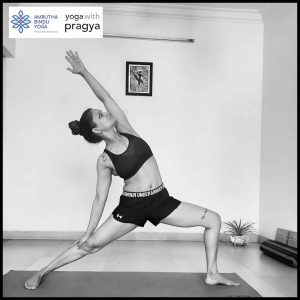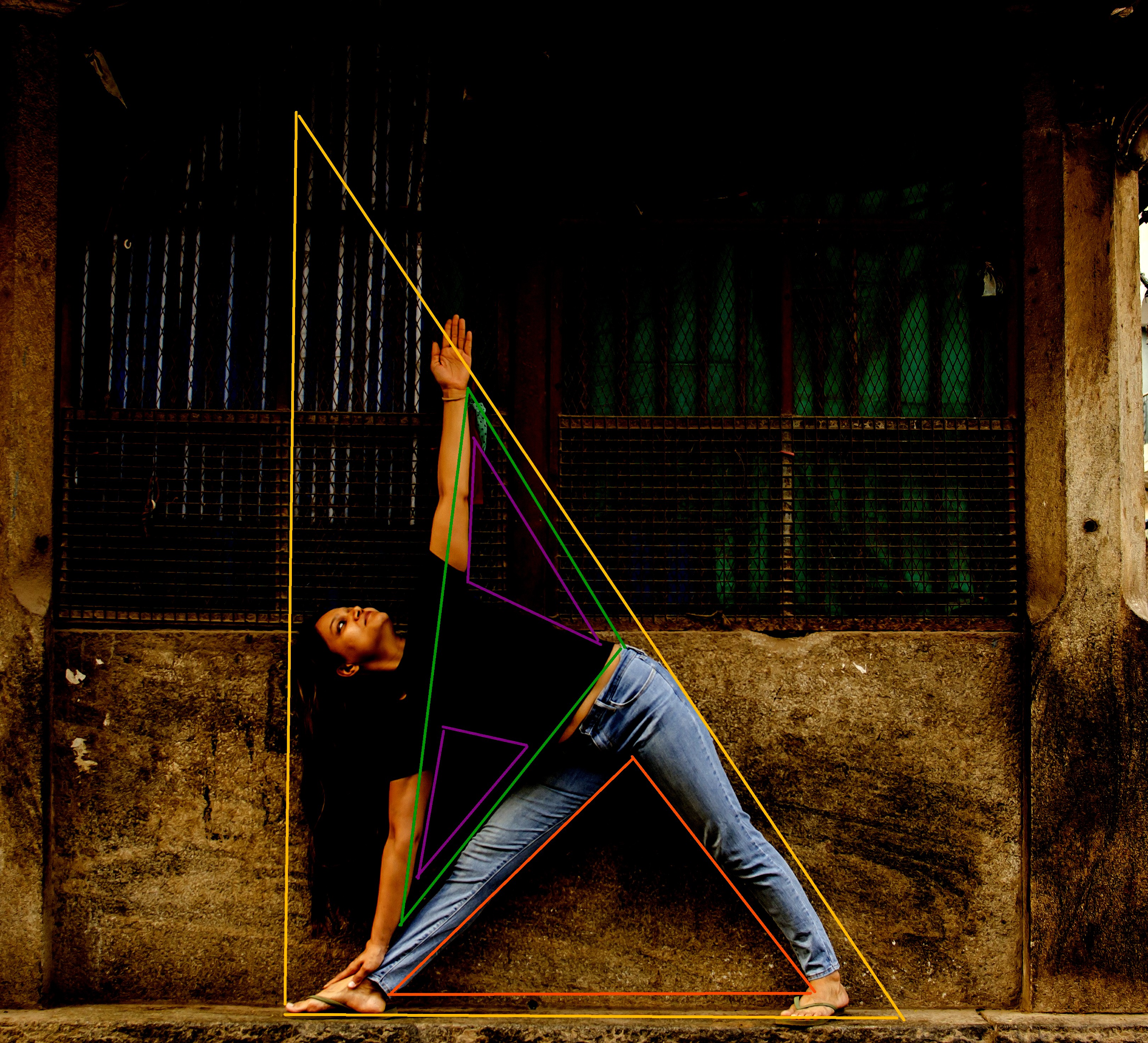The Viparita Virbhdrasana is an asana that I haven’t explored too much as it’s rarely practiced in classes I attend. As a result, I don’t teach it very much either. In fact, I wasn’t even sure of the Sanskrit name for this posture before Medha enlightened me.

In a practice which has three different versions of the Warrior posture, why would there be a pose called ‘reverse’ warrior. What does it signify? Is there a deeper meaning?
The most common problem I see when students practice the Virbhadrasana 2 is the tendency to lean the torso forward, towards the leg which is bent and turned out. But we need to try to keep the chest open and expanded, just like a brave warrior. The way I like to explain it to my students is that a warrior needs to protect himself and in the battlefield is surrounded on all sides by the enemy. If he leans too much to the front, he won’t be vigilant about the danger that could be lurking behind him. Therefore, it’s important to keep a long and strong torso, even as one leg is bent to the side. The Viparita Virbhadrasana helps to correct the tendency to lean forward.
Benefits of the Viparita Virbhadrasana:
- Great to stretch and lengthen the sides of the torso.
- Opens the hips, groin and sides of the body.
- Expands the torso, enabling better breathing.
- Strengthens the legs.
Watch the video below for pointers for this asana.
Participate in our Work From Home Challenge this entire month and win a giveaway at the end of the challenge. Download our practice tracker and asana sequence below:
[ddownload id=”8554″] Practice Tracker
[ddownload id=”8549″] Yoga Sequence
For more information go to:
Medha Bhaskar: https://www.instagram.com/medha.bhaskar/
Amrutha Bindu Yoga: https://www.amruthabindu.com/
Pragya Bhatt: https://www.instagram.com/yogawithpragya/
